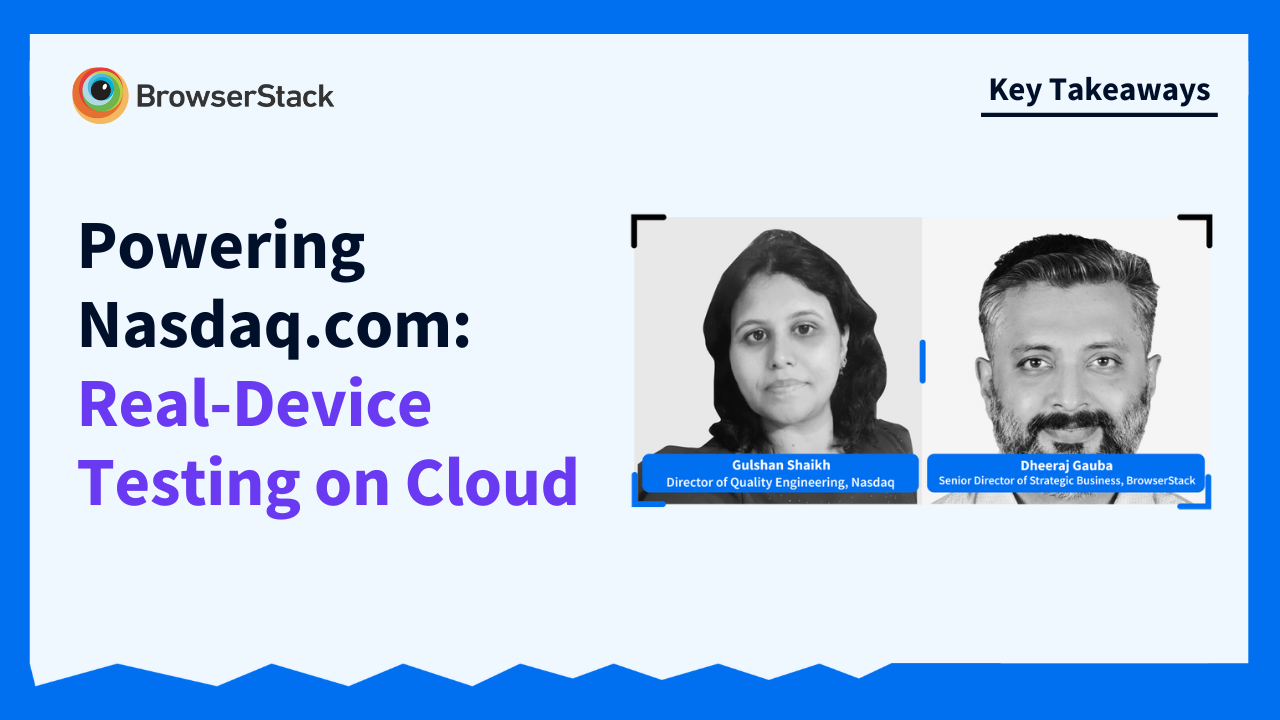
We recently hosted Gulshan Shaikh, Director of QE at Nasdaq, for the ‘Powering Nasdaq.com: Real-Device Testing on Cloud’ webinar. Gulshan outlined how her team overcame the most common testing challenges to deliver world-class experiences to all their customers.
Interestingly, a poll conducted during the webinar revealed ‘real device coverage’ to be the biggest challenge faced by development teams with their testing solutions. Below are the results in order of decreasing magnitude:
- Real Device Coverage
- Instant Access to Devices
- Latency
- Data Security
- Customer Support
Gulshan’s team, too, was facing similar challenges before they moved testing to BrowserStack. The bottom line - as software testing becomes increasingly complex, selecting the right test infrastructure platform becomes an important task!
Here are the key takeaways from Gulshan’s session that will help your team transform testing:
1. In-house device labs are difficult to maintain and scale
While in-house device labs seem like a convenient option at the onset, they are difficult to maintain and scale, slowing down your release cycles as your testing requirements increase. Procuring devices and ensuring round-the-clock availability, coupled with maintenance and ad-hoc troubleshooting, introduces inefficiencies into your testing process while adding to the resource load. This ultimately leads to frustrated, blocked teams, delayed releases, and negative customer experiences due to declining product quality.
2. A real device cloud with low latency can help increase release velocity
Today, most development teams are spread out globally. Stable real devices on the cloud, coupled with low latency, are a boon for geographically distributed teams. Whatever the location, the availability of the latest devices to test with minimal effort drastically improves efficiency and collaboration.
Testing on a performant real device cloud like BrowserStack helped Gulshan’s team cut testing time by over 80%.
“What took days was now being achieved in hours.”
- Gulshan Shaikh, Director of QE, Nasdaq
This helped them achieve multiple releases under tight deadlines and turned the testing teams into dependable units.
3. Device coverage greatly impacts customer experience
With popular new mobile devices being launched frequently, development teams need to test on the latest devices as soon as they reach their end users. This is difficult to achieve with an in-house device lab due to logistical constraints and the costs involved. Ensuring you choose a testing solution with diverse device coverage helps your team avoid issues with new devices and have greater confidence in the product.
“Early access [to devices] makes it easier for the design team, developers, and product owners to get feedback early.”
- Gulshan Shaikh, Director of QE, Nasdaq
Take your testing to the next level
If you missed the webinar or would like to watch it again, here’s how Gulshan Shaikh’s QE team at Nasdaq leveraged BrowserStack to transform into a highly available team with quick response times that supported dynamic release cycles.
Want to supercharge testing with BrowserStack’s real device cloud and speed up testing by 80+%, like Gulshan’s team? Get started for free!
